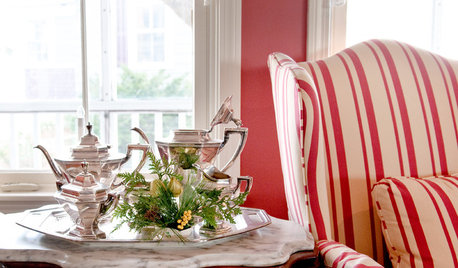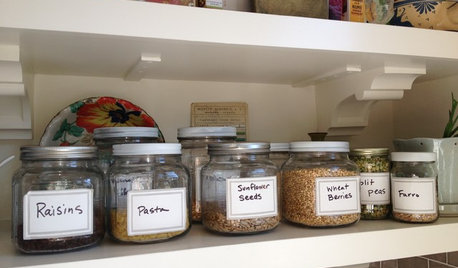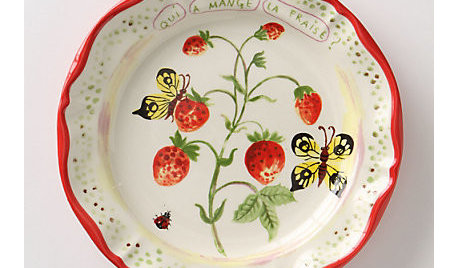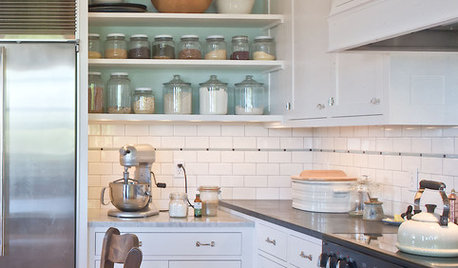50% sugar: jams & pies
donnie88
11 years ago
Related Stories

KITCHEN DESIGN16 Scrumptious Eat-In Kitchens and What They Want You to Serve
Whether apple-pie cheerful or champagne sophisticated, these eat-in kitchens offer ideas to salivate over
Full Story
EDIBLE GARDENSSummer Crops: How to Grow Pumpkins
Start in spring to grow your own fall decorations and have plenty left for pies
Full Story
EDIBLE GARDENSWhy Grow Quince? For Beauty, Fragrance and Old-Time Flavor
Delightfully perfumed fruit and lovely spring blossoms make this apple and pear cousin worth a spot in the garden
Full Story
LIFESimple Pleasures: Indulging in Teatime
Get out the china cups and cream-slathered scones. Tea with treats can make even an uneventful day feel extravagant
Full Story
KITCHEN DESIGNHouzz Call: What’s Cooking in Your Kitchen?
Most of us turn to recipes, videos and culinary shows when we cook. Where do you set your cookbook, tablet or TV screen?
Full Story
PRODUCT PICKSGuest Picks: Set a Beautiful Breakfast Table
Start the day off on the right note with cheery serveware and accessories for kitchen and table
Full Story
DECORATING GUIDESRoom of the Day: Playing Up Color in a California Lounge
Candy-licious stripes and splashes of other lively hues show that this hangout for teens and their parents is ready for fun
Full Story
KITCHEN STORAGEArtful Organizers: Jars for Pretty Pantry Displays
Ditch the disheveled look of mismatched boxes and bags for colorful or clear pantry jars in an appealing arrangement
Full Story
PRODUCT PICKSGuest Picks: 20 Berry Good Kitchen Finds
This batch of baking, canning and berry-inspired kitchen supplies is ripe for the picking
Full Story
KITCHEN DESIGNLove to Bake? Try These 13 Ideas for a Better Baker's Kitchen
Whether you dabble in devil's food cake or are bidding for a bake-off title, these kitchen ideas will boost your baking experience
Full Story





larry_gene
spartan-apple
Related Professionals
New Bedford Landscape Architects & Landscape Designers · Cary Landscape Architects & Landscape Designers · Clark Landscape Architects & Landscape Designers · Clemson Landscape Architects & Landscape Designers · Horsham Landscape Architects & Landscape Designers · South Elgin Landscape Architects & Landscape Designers · Walnut Landscape Architects & Landscape Designers · Surprise Landscape Contractors · Addison Landscape Contractors · Andover Landscape Contractors · El Segundo Landscape Contractors · Eustis Landscape Contractors · Hayden Landscape Contractors · La Vista Landscape Contractors · Parker Landscape ContractorsScott F Smith
larry_gene
peachymomo
trianglejohn
northwoodswis4
flora_uk
readinglady
mrtexas